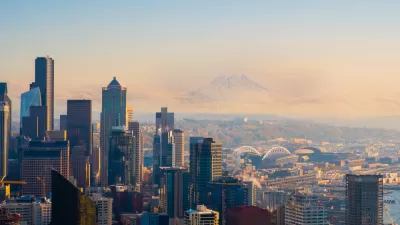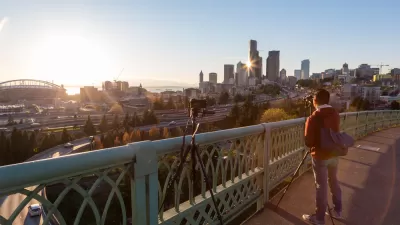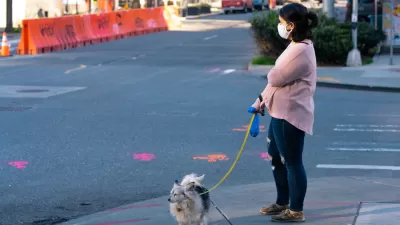Ryan Packer argues that Seattle could do more to improve its retail districts by updating its building codes to encourage dense, welcoming shopping districts.
Brick and mortar retailer stores flourish in areas where other similar stores are plentiful. Empty buildings, long stretches of brick or concrete walls, and even large retailers with one entrance can create streets that feel dead. Flourishing retail districts don't just benefit shop owners, they give cities their vibrancy, encourage walking and make for interesting places to visit.
In a piece for The Urbanist, Ryan Packer suggests three strategies to encourage these lively neighborhoods:
- Giving extra floor area in exchange for locating the large-footprint retail uses away from street frontages;
- Encouraging smaller, ground floor retail units
- Requiring accessibility and higher activity uses at primary street corners.
Even featureless blocks don't have to feel abandoned. "Some practical solutions to improving these spaces include things like ground floor transparency (few blank walls), adding faux building entrances, painting murals on walls, and reducing maximum building widths," Packer adds.
FULL STORY: Encouraging Better Seattle Retail Districts

Planetizen Federal Action Tracker
A weekly monitor of how Trump’s orders and actions are impacting planners and planning in America.

Maui's Vacation Rental Debate Turns Ugly
Verbal attacks, misinformation campaigns and fistfights plague a high-stakes debate to convert thousands of vacation rentals into long-term housing.

San Francisco Suspends Traffic Calming Amidst Record Deaths
Citing “a challenging fiscal landscape,” the city will cease the program on the heels of 42 traffic deaths, including 24 pedestrians.

Defunct Pittsburgh Power Plant to Become Residential Tower
A decommissioned steam heat plant will be redeveloped into almost 100 affordable housing units.

Trump Prompts Restructuring of Transportation Research Board in “Unprecedented Overreach”
The TRB has eliminated more than half of its committees including those focused on climate, equity, and cities.

Amtrak Rolls Out New Orleans to Alabama “Mardi Gras” Train
The new service will operate morning and evening departures between Mobile and New Orleans.
Urban Design for Planners 1: Software Tools
This six-course series explores essential urban design concepts using open source software and equips planners with the tools they need to participate fully in the urban design process.
Planning for Universal Design
Learn the tools for implementing Universal Design in planning regulations.
Heyer Gruel & Associates PA
JM Goldson LLC
Custer County Colorado
City of Camden Redevelopment Agency
City of Astoria
Transportation Research & Education Center (TREC) at Portland State University
Jefferson Parish Government
Camden Redevelopment Agency
City of Claremont





























